#iven art
Text
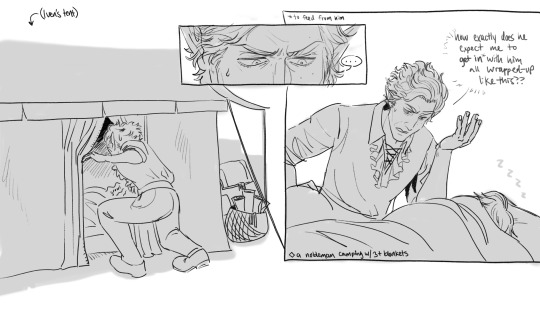

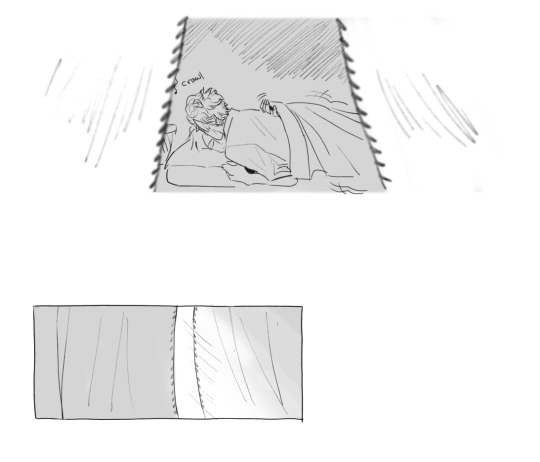


Bloodless? 🩸
#baldur's gate 3#astarion#bg3#astarion x tav#iven art#tavstarion#inspired by how many times he's told me he'll come after bed to feed like... good luck I'm under 5 burritoed blankets#i've seen so many messy hair astarion posts I wanted to draw it and the comic came after#i am very slowly learning how to panel comics thanks for watching
6K notes
·
View notes
Text

Woolly Costume
#miitopia#my art#my ocs#quick doodles#mii ester#mii iven#mii derrak#they're getting ready for a party#ester doesn't care much for the costume choice#it's itchy and it looks silly#(...tho she does kinda enjoy the wing cozies#good for keeping stone wings warm)#//i'll draw the rest of my miitopia team one of these days i swear ;>>
12 notes
·
View notes
Text

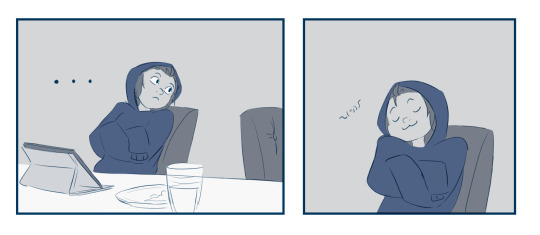
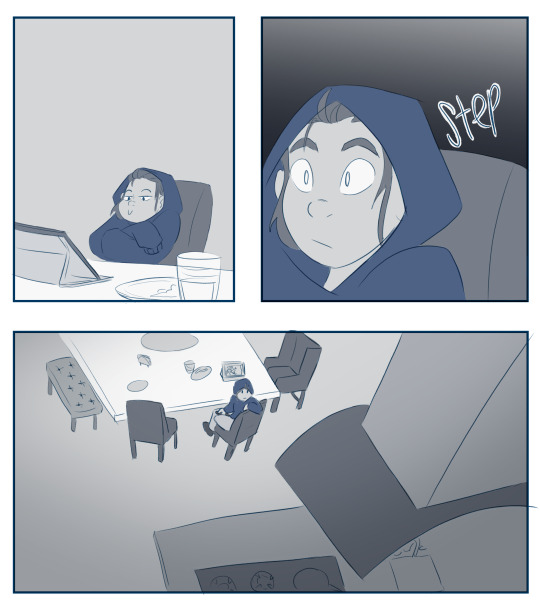
I think there might be ghosts in my house again
#of all the things that had happened lately this is the one that had scared me the most#the door clossing i have goten used to#the kids ghosts that used to be around years ago spend all day moving and closing that door#so i didnt think too much of it#but then i heard a fucking step just behind me#it was so fucking clear#and i was not the video. i wasnt iven watching videos at this point i was just on tumblr#oh yeah this two things happened like 20 minutes apart#i messaged my brother inmediately#im used to hear things in my house but this was way too close to me and i hate it#dg art#dg comics
136 notes
·
View notes
Photo

You only heard the statement of the loss. You did not see the father fall as Pilar made him see the fascists die in that story she had told by the stream. You knew the father died in some courtyard, or against some wall, or in some field or orchard, or at night, in the lights of a truck, beside some road. You had seen the lights of the car from down the hills and heard the shooting and afterwards you had come down to the road and found the bodies. You did not see the mother shot, nor the sister, nor the brother. You heard about it; you heard the shots; and you saw the bodies.
- Ernest Hemingway, For Whom the Bell Tolls
The 1937 film The Spanish Earth, was an important visual document of the Spanish Civil War and a rare record of the famous writer's voice. Hemingway went to Spain in the spring of 1937 to report on the war for the North American Newspaper Alliance (NANA), but spent a good deal of time working on the film.
Before leaving America, he and a group of artists that included Archibald MacLeish, John Dos Passos and Lillian Hellman banded together to form Contemporary Historians, Inc., to produce a film to raise awareness and money for the Spanish Republican cause. The group came up with $18,000 in production money - $5,000 of it from Hemingway - and hired the Dutch documentary filmmaker Joris Ivens, a passionate leftist, to make the movie.
MacLeish and Ivens drafted a short outline for the story, with a theme of agrarian reform. It was MacLeish who came up with the title. The film, as they envisioned it, would tell the story of Spain's revolutionary struggle through the experience of a single village. To do that, Ivens planned to stage a number of scenes. When he and cameraman John Fernhout (known as "Ferno") arrived in Spain they decided to focus on the tiny hamlet of Fuentedueña de Tajo, southeast of Madrid, but they soon realised it would be impossible to set up elaborate historical re-enactments in a country at war. They kept the theme of agrarian struggle as a counterpoint to the war.
When Dos Passos arrived in Fuentedueña, he encouraged that approach. "Our Dutch director," wrote Dos Passos, "did agree with me that, instead of making the film purely a blood and guts picture we ought to find something being built for the future amid all the misery and massacre."
That changed when Hemingway arrived.

The friendship between the two writers was disintegrating at the time, so they didn't work together on the project. It was agreed upon in advance that Hemingway would write the commentary for the film, but while in Spain he also helped Ivens and Fernhout navigate the dangers of the war zone. Hemingway was a great help to the film crew. With a flask of whisky and raw onions in his pockets, he lugged equipment and arranged transport. Ivens generally wore battle dress and a black beret. Hemingway went as far as a beret but otherwise stuck to civvies. Although he rarely wore glasses, he almost never took them off in Spain, clear evidence of the seriousness of their task."
In Night Before Battle, a short story based partially on his experience making the movie, Hemingway describes what it's like filming in a place where the glint from your camera lens draws fire from enemy snipers:
“At this time we were working in a shell-smashed house that overlooked the Casa del Campo in Madrid. Below us a battle was being fought. You could see it spread out below you and over the hills, could smell it, could taste the dust of it, and the noise of it was one great slithering sheet of rifle and automatic rifle fire rising and dropping, and in it came the crack of the guns and the bubbly rumbling of the outgoing shells fired from the batteries behind us, the thud of their bursts, and then the rolling yellow clouds of dust. But it was just too far to film well. We had tried working closer but they kept sniping at the camera and you could not work.”
The big camera was the most expensive thing we had and if it was smashed we were through. We were making the film on almost nothing and all the money was in the cans of film and the cameras. We could not afford to waste film and you had to be awfully careful of the cameras.
The day before we had been sniped out of a good place to film from and I had to crawl back holding the small camera to my belly, trying to keep my head lower than my shoulders, hitching along on my elbows, the bullets whocking into the brick wall over my back and twice spurting dirt over me.

The Western front at Casa de Campo on the outskirts of Madrid was just a few minutes' walk from the Florida Hotel, where the filmmakers were staying. Any doubt about whether the passage from "Night Before Battle" is autobiographical are dispelled in the following excerpt from one of Hemingway's NANA dispatches, quoted by Schoots:
“Just as we were congratulating ourselves on having such a splendid observation post and the non-existent danger, a bullet smacked against a corner of brick wall beside Ivens's head. Thinking it was a stray, we moved over a little and, as I watched the action with glasses, shading them carefully, another came by my head. We changed our position to a spot where it was not so good observing and were shot at twice more. Joris thought Ferno had left his camera at our first post, and as I went back for it a bullet whacked into the wall above. I crawled back on my hands and knees, and another bullet came by as I crossed the exposed corner. We decided to set up the big telephoto camera. Ferno had gone back to find a healthier situation and chose the third floor of a ruined house where, in the shade of a balcony and with the camera camouflaged with old clothes we found in the house, we worked all afternoon and watched the battle.”

In May, Ivens returned to New York to oversee the work of editor Helen van Dongen. Hemingway soon followed. When Ivens asked Hemingway to clarify the theme of the picture, according to Kenneth Lynn in his erudite biography Hemingway (1987), the writer supplied three sentences: "We gained the right to cultivate our land by democratic elections. Now the military cliques and absentee landlords attack to take our land from us again. But we fight for the right to irrigate and cultivate this Spanish Earth which the nobles kept idle for their own amusement."
There were tense moments when Hemingway handed in his first draft of the commentary. Ivens felt it was too verbose, and asked him to make some cuts. Hemingway didn't like being told to shorten his work, but he eventually agreed. There was more tension when MacLeish asked Orson Welles to deliver the narration. Even though Hemingway had already shortened it, Welles thought the commentary was too long, and he told him so.
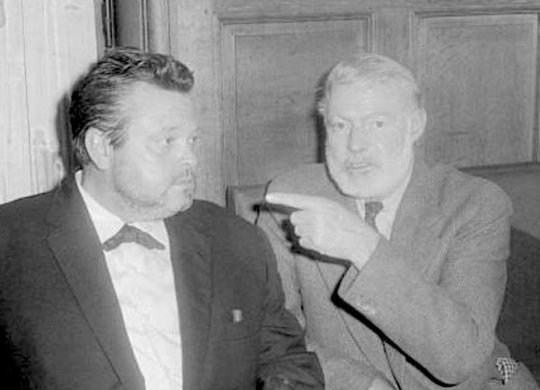
"Arriving at the studio," Welles said in a 1964 interview with Cahiers du Cinema, "I came upon Hemingway, who was in the process of drinking a bottle of whiskey; I had been handed a set of lines that were too long, dull, had nothing to do with his style, which is always so concise and so economical. There were lines as pompous and complicated as this: 'Here are the faces of men who are close to death,' and this was to be read at a moment when one saw faces on the screen that were so much more eloquent. I said to him, 'Mr. Hemingway, it would be better if one saw the faces all alone, without commentary.'"
Hemingway growled at him in the dark studio, according to Welles, and said, "You effeminate boys of the theatre, what do you know about real war?" Welles continues the story:
“Well, taking the bull by the horns, I began to make effeminate gestures and I said to him, "Mister Hemingway, how strong you are and how big you are!" That enraged him and he picked up a chair; I picked up another and, right there, in front of the images of the Spanish Civil War, as they marched across the screen, we had a terrible scuffle. It was something marvelous: two guys like us in front of these images representing people in the act of struggling and dying...We ended up toasting each other over a bottle of whisky.”
Skeptics have questioned the truthfulness of Welles's account, suggesting that he may have been trying to compensate for his own moment of humiliation, which followed soon after the recording session. MacLeish and Ivens liked Welles's performance, but Hellman and several other members of the Contemporary Historians group didn't. They thought Welles had been too theatrical, and suggested Hemingway read the narration himself.
The director eventually agreed. "When Ivens informed Welles that his own recording was going to be junked," writes Lynn, "Welles was miffed, especially since he had waived his right to a fee."

On July 8, 1937, Ivens, Hemingway and Martha Gellhorn, a journalist who had been with Hemingway in Spain and who would later become his wife, traveled to the White House to show the film to President Franklin Delano Roosevelt. The visit had been arranged by Gellhorn, who was a friend of first lady Eleanor Roosevelt.
A few days later Hemingway and Ivens traveled to Los Angeles to show the film to Hollywood moguls and movie stars. F. Scott Fitzgerald attended the screening, and the party afterward. It was the last time Hemingway and Fitzgerald saw each other. When Hemingway was back on the East Coast, Fitzgerald sent him a telegram: "THE PICTURE WAS BEYOND PRAISE AND SO WAS YOUR ATTITUDE."
The press reviews for The Spanish Earth tended to be a bit more equivocal. Some felt the film descended into out-and-out propaganda, to which Ivens later replied, "on issues of life and death, democracy or fascism, the true artist cannot be objective." But the writer of a 1938 article in Time magazine saw the film in a positive light:
“Not since the silent French film, The Passion of Joan of Arc, has such dramatic use been made of the human face. As face after face looks out from the screen the picture becomes a sort of portfolio of portraits of the human soul in the presence of disaster and distress. There are the earnest faces of speakers at meetings and in the village talking war, exhorting the defense. There are faces of old women moving from their homes in Madrid for safety's sake, staring at a bleak, uncertain future, faces in terror after a bombing, faces of men going into battle and the faces of men who will never return from battle, faces full of grief and determination and fear.”

In the end, with its mix of documentary and re-constructed elements, The Spanish Earth is at once a less elaborate but more complex film than that first conceived by Ivens. One critic aptly describes it as "an improvised hybrid of many filmic modes." This gives the film a curiously contemporary feel, but what really marks it out as a landmark of documentary filmmaking is its directness, its sense of immediacy, and its refusal to have any truck with spurious notions of "objectivity."
Ivens himself states that "My unit had really become part of the fighting forces," and again, "We never forgot that we were in a hurry. Our job was not to make the best of all films, but to make a good film for exhibition in the United States, in order to collect money to send ambulances to Spain. When we started shooting we didn't always wait for the best conditions to get the best shot. We just tried to get good, useful shots."
When asked why he hadn't tried to be more "objective" Ivens retorted that "a documentary film maker has to have an opinion on such vital issues as fascism or anti-fascism - he has to have feelings about these issues, if his work is to have any dramatic, emotional or art value," adding that "after informing and moving audiences, a militant documentary film should agitate - mobilise them to become active in connection with the problems shown in the film." Ivens would later justify his beliefs by stating, "on issues of life and death, democracy or fascism, the true artist cannot be objective."
Not that The Spanish Earth is in any sense strident - indeed, quite the reverse. Ivens understood fully the power of restraint and suggestion, quoting approvingly, à propos his film, John Steinbeck's observation of the London blitz that "In all of the little stories it is the ordinary, the commonplace thing or incident against the background of the bombing that leaves the indelible picture."

Ivens's visual restraint is matched by that of the commentary. The original commentary by Orson Welles did feel out of place and I would agree with Ivens sentiment that, "There was something in the quality of Welles’ voice that separated it from the film, from Spain, from the actuality of the film." Hemingway's manner of speaking, however, perfectly matched the pared-down quality of his writing. Ivens saw the function of the commentary as being "to provide sharp little guiding arrows to the key points of the film" and as serving as "a base on which the spectator was stimulated to form his own conclusions." He described Hemingway's mode of delivery as sounding like that of "a sensitive reporter who has been on the spot and wants to tell you about it. The lack of a professional commentator's smoothness helped you to believe intensely in the experiences on the screen."

Overall the film's avoidance of overt propagandising reflected not only Ivens' conception of the documentary aesthetic - it was also hoped that this might help The Spanish Earth achieve a wide theatrical release. However, as in Britain, there was thought to be no cinema audience for documentary films, and the plan failed. Nor did it help the film to escape the watchful eye of the British Board of Film Censors (who had previously attacked Ivens' New Earth) , who insisted that all references to Italian and German intervention were cut from the commentary, those countries being regarded as "friendly powers" at the time.
Photo (above): Ernest Hemingway and director Joris Ivens During the shooting of "The Spanish Earth" (1937).
#hemingway#ernest hemingway#the spanish civil war#war#the spanish earth#documentary#joris ivens#ivens#film#movie#cinema#orson welles#welles#f scott fitzgerald#europe#propaganda#art#aesthetics#film director#america#spain#fascism#franco
41 notes
·
View notes
Text



FINALLY, I THINK I'M DONE
Ivene, my TMNT (2003) OC/Self Insert
Determined to find Drako's whereabouts and destroy those who stand in their way!
Poor Ivene has no idea what actually happened to him...
13 notes
·
View notes
Text
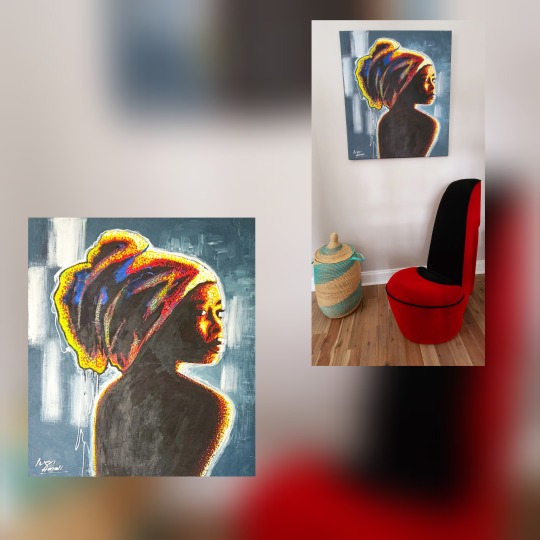
Perfect 🥰
Wall art by Iven Amali, Senegalese laundry basket, high heel shoe chair
3 notes
·
View notes
Note
I like your art!
Can you draw Rose and Kanaya?
iven draw them so much! so i tried somehting a littl different, hop eits ok!

goofy aa woemn
31 notes
·
View notes
Note
Ok. Soo, just got to read the issue 140 and....my God, was it a lot. Especially from a dramatic point of view. Was to be expected tho.
Iven tho the Armageddon game issue finale is not out yet, I can see for sure how much evreyone has to suffer because of it.
Il get this out of the way first. The issue lookt great! The art was very nice and did a very good set up for what will happen next.
Now. For the things I noticed .
1. Seeing Raph act like that was both to be expected and a bit painful at the same time ... and it sure not got better for him at the end of the issue..far from it. I do get way evreyone is sooo done whit EVREYTHIG. Those kids suffered non-stop and that's without considering what might happen in the future. They got to their breaking point and I understand it.
2. The part whit Alopex was intriguing to me. Yes. As I myself saw a lot of times, there is a lot of fans that are frustrated with what happened to her and Raph and whit how she is acting now especially . And, I would lie to say I myself am not a bit frustrated as well...but, I do get what you are going for and it seems that Alopex herself is not sure what iven is happening enymore also.

Oh. BTW. Claw Clan is a very cute name. Ngl. And, iven whit what is happening, is nice to see her and the little ones still play a bit. I am looking forward to see what the next issues bring for those 2, especially if the description of issue 142 is something to go by.
Speaking of which . The part whit Casey being missing got me thinking .... Seeing that Leatherhead and that Doc will kidnap someone close to Alopex ... is there a chance that this is what also happened whit Casey?
Like... we will get to see him again, right? Also...what happened whit Angel? Not iven a mention of her so far.
One last thing about this issue is that is nice to see Bob in this finally .
Now. Overall all, this was an very interesting issue. Like the new set up of the city and the fact Seri is back as well. I am a bit worry about some of the characters, especially Casey and Angel and very curious how the story will evolve both for Raph and Alopex and for Doni , seeing that the future topic of this series is sooo....fascinating to see and IF or ( more correctly said ) WHAT can change in it. Hopefully, is for the better.
Thanks for reading! :D The scheduling is a mess and it's a little frustrating #140 came out before Armageddon Game #8 but sometimes that stuff happens in monthly comics, things don't always shake out how they're supposed to.
I don't know if you saw my other answer to whoeynardo, but Casey isn't actually missing, that's something that Armageddon Game #8 will explain. ;)
Angel will be back in issue 142, I haven't forgotten about her! It's just a lot of characters to juggle and I can't always include everyone in every issue. I had actually wanted Angel to join the Claw Clan originally but it didn't work out!

30 notes
·
View notes
Text

I do art stuff, this is my first post. Tumblr is a place of mischief and anarchy, and even after 8 years I don't understand this place.
(This is my OC Iven, protagonist of my Comic)
#artwork#illustration#digital art#artists on tumblr#original character#web comic#original comic#art community#how to use hashtags huh#very interestinf platform
12 notes
·
View notes
Text

so uh. i’ve sketched this early in the morning cuz i couldn’t sleep. i suppose it’s dream’s way of inspiring people, huh?
btw i took a cosmos painting by antonio ivens for bg as a tribute to the series’ connection to classic art!
75 notes
·
View notes
Text
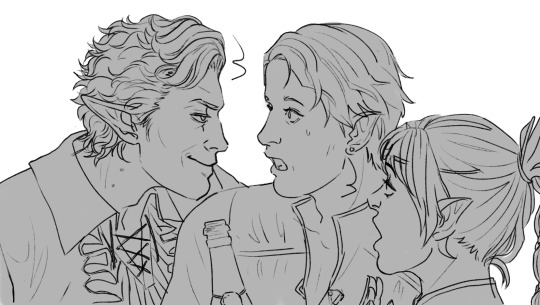

they just put up with our bullshit
#baldur's gate 3#astarion#iven tag#Halsin#shadowheart#gale dekairos#gale of waterdeep#bg3#astarion x tav#i saw a couple screenshots of selena telling tswift some story and the reactions of them and then these two who were NOT INVOLVED killed me#sylphy art
1K notes
·
View notes
Note
Wey yo te sigo desde hace mucho...
Desde que dibujabas a Ranboo y Tubbo (uys). Me encanta tu arte y ahora me vengo enterando que eres pissa nation VAMOOO CHINGAOOOO.
saluditos tqm
Ay dios desde esa época??? Eres de los reales HAHAHAHA
Me alegra que me den la bienvenida!! Los quiero mucho también tqm iven <333
3 notes
·
View notes
Text
Welllllllll......... I made squigly's fan art but now the file is broken and I can't open it :( I CAN'T IVEN FINISH THAT!!!!!!!

4 notes
·
View notes
Note
Gonna need a 2, 7, and 22 on that art ask prompt boo B)
hehe thank u for the ask!!! :33c
2. what’s your favorite thing about your style?
another one of my favorite things is how i draw feet tbh
a lot of people seem to like it and even tho theyre hard as FUCK to draw properly its super rewarding to be like "hm. yes. anatomy win" when stepping back and looking at the finished sketch :O
7. show us a WIP
i have so many atm oh my god
ill show a few!!
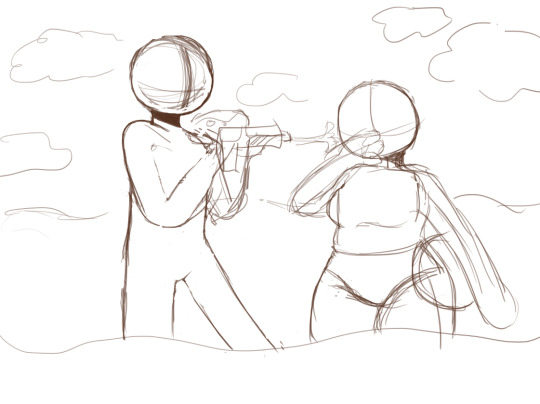
this is my current one, its part of iven's massive birthday present and its taking me SO LONG ARARRARRRR
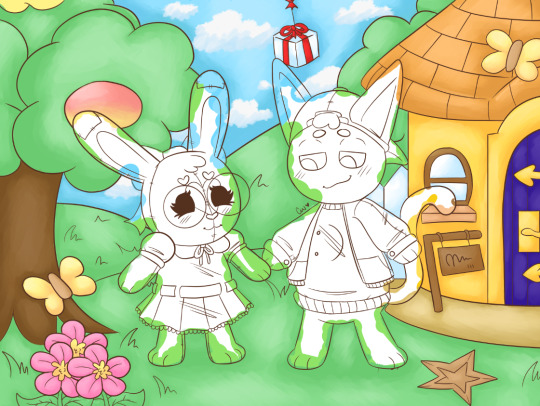
also part of iven's bday present, mostly finished!! i just have to color in the villagers and add some final details :33c

aaaand heres a tickle one!!! my girls, my babies <333 still gotta clean the sketch and color and add texture and shdghdfhhfdhghhh
22. what inspires you?
oh thats a real good q
all of my art is soft and lovey dovey so i think its safe to say that iven is one of my main inspirations, i love drawing us being cute together ;w; i just!! love showing affection between chars!!! waa!!
7 notes
·
View notes
Note
OH MY GOD IVAN THE TERRIBLE AND HIS SON IVEN IS ALSO ONE OF MY ALL TIME FAVORITES YOU HAVE AWESOME TASTES IN ART!!!!!!!!!!!! not even exaggerating either, the faces of the painting are my pfps on most of my online accounts it's a absolutely stunning work the grief and raw horror on their faces is unparalleled
-yoshi anon
No way! ikr its such a beautiful painting, so haunting! how cool is that. I'm glad that this painting is getting the love it deserves, Its definitely one of a kind. I also really enjoy the (numerous) paintings of greek mythology too, they are so beautiful. The nymph paintings are so soft! I love this kind of genre of art.
3 notes
·
View notes

